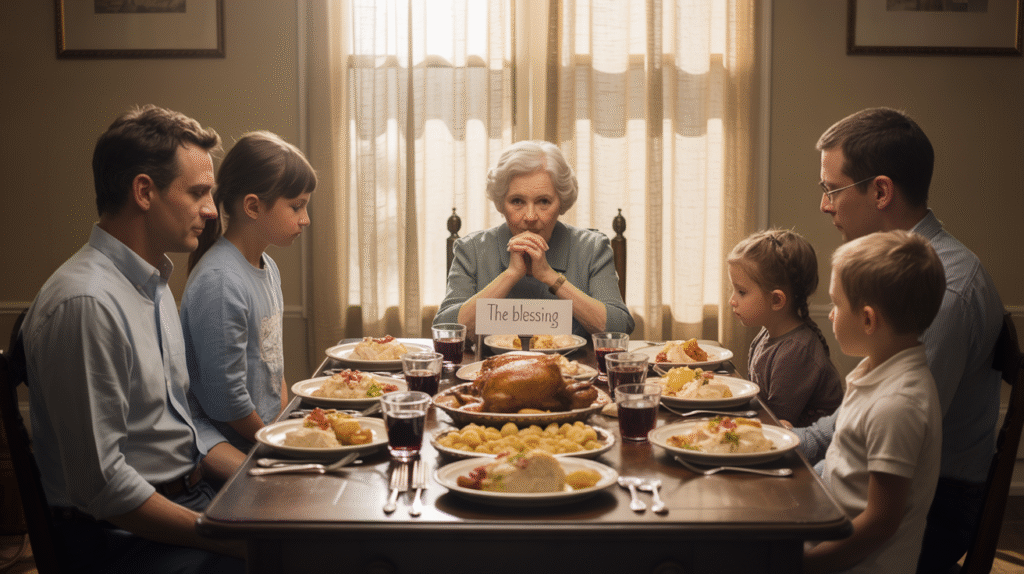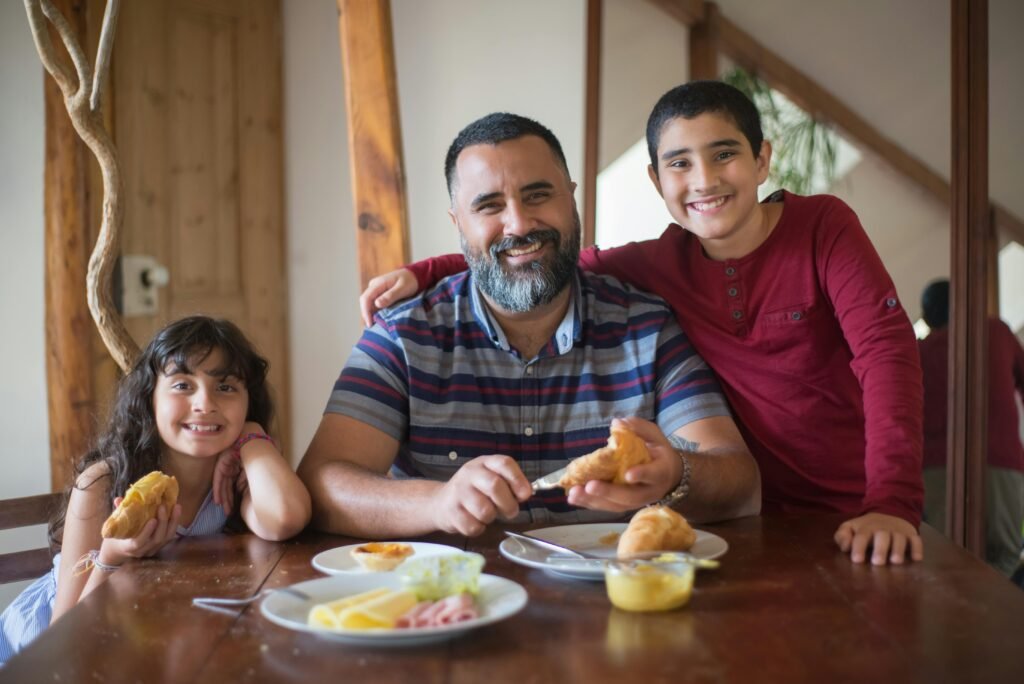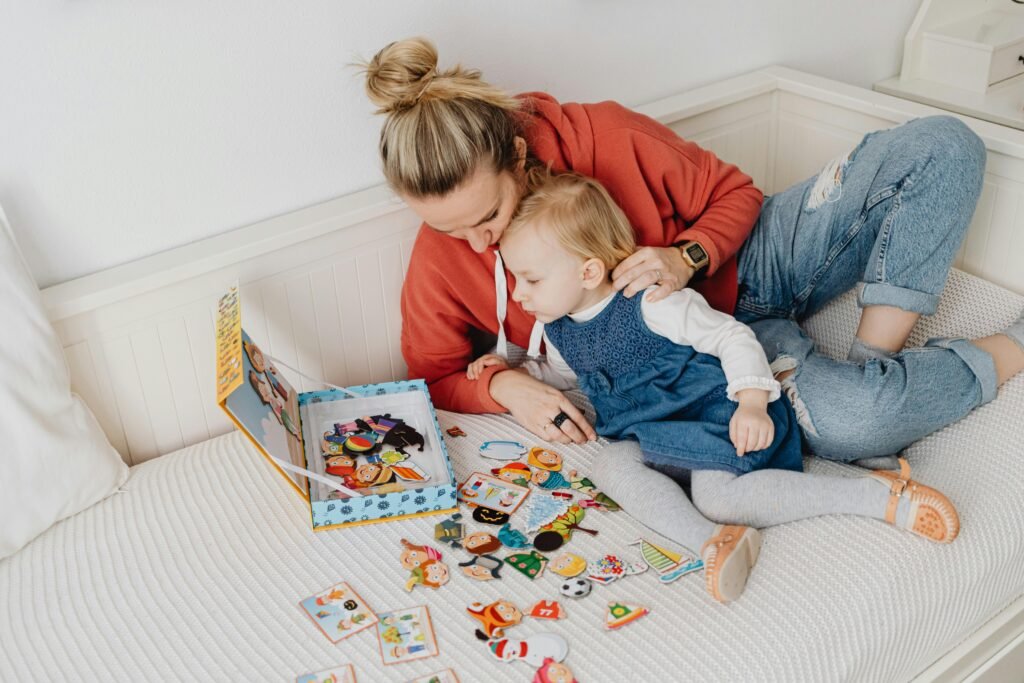7 Little Things That Strengthen a Family

Ever notice how some families just seem to have it together? They laugh easily, support each other through tough times, and actually enjoy being in the same room. Meanwhile, others can barely make it through dinner without World War III breaking out over the last dinner roll.
The difference isn’t grand gestures or perfect circumstances. It’s the little things that build strong families – consistent, everyday moments that create unshakable bonds.
Family strength doesn’t require expensive vacations or picture-perfect holiday gatherings. These seven little things that strengthen a family are available to everyone, regardless of your schedule or budget.
The beauty is in their simplicity. You’re probably already doing some of them without realizing their power. But when intentionally practiced, they transform ordinary households into extraordinary families.
So what are these magical little practices that make such a difference? They’re surprisingly simple, but their impact runs deep.
Daily Family Meals: The Power of Breaking Bread Together

Creating meaningful mealtime conversations
The dinner table isn’t just for eating—it’s your family’s daily conference room. The magic happens when you move past “How was school?” and dig deeper.
Try these instead:
- “What made you laugh today?”
- “Who did you help today?”
- “What’s something new you learned?”
Kids clam up? Share your own day first. When my daughter wouldn’t talk about school, I started sharing funny client stories from work. Before long, she was jumping in with her own tales.
The secret? Actually listen. Put down your fork, make eye contact, and follow up with questions that show you’re genuinely interested.
Unplugging during dinner: A tech-free zone
Phones stealing your family mealtime? You’re not alone.
Create a “phone basket” that sits far away from the table. Everyone’s devices go in—yes, yours too, parents. The world won’t end during your 30-minute meal.
The difference is immediate. Without screens, faces light up instead of phones. Conversations flow. Eye contact happens. Real connection begins.
Involving everyone in meal preparation
Family meals start long before anyone sits down.
Even toddlers can tear lettuce or set spoons on the table. Teenagers might chop veggies or choose tomorrow’s menu. The point isn’t perfection—it’s participation.
When everyone contributes, ownership happens. That picky eater? They’re more likely to try something they helped create.
Establishing consistent dinner rituals
Rituals anchor families. They’re the little things everyone counts on.
Try:
- Gratitude rounds: Each person shares one good thing
- Special plates: A red plate rotates to celebrate daily wins
- Theme nights: Taco Tuesdays or Breakfast-for-Dinner Fridays
These aren’t just cute traditions—they’re the glue that builds family identity and belonging.
Regular Family Meetings: Building a Democratic Home

A. Setting up effective meeting formats
Family meetings don’t need to be boring corporate-style gatherings. They work best when they’re consistent and comfortable. Pick a regular time—maybe Sunday evenings before the week begins—when everyone’s usually home. The kitchen table works perfectly, or gather in the living room with snacks.
Keep it simple: start with something positive, address any issues, make decisions together, and end on a high note. The magic happens when everyone gets equal talking time—yes, even the four-year-old.
B. Acknowledging achievements and progress
Begin each meeting celebrating wins, big or small. Did your teenager ace a test? Did your youngest finally learn to tie their shoes? Did Dad finally fix that leaky faucet? These moments matter.
This isn’t just feel-good fluff—it’s relationship glue. When families regularly acknowledge each other’s accomplishments, everyone feels seen and valued. The research backs this up: families who celebrate together stay connected through tough times.
C. Solving problems together
Family conflicts happen. Period. But solving them together teaches kids invaluable life skills.
When issues come up—maybe the chore schedule isn’t working or siblings are fighting over bathroom time—use meetings to find solutions everyone can live with. The key? No blame games. Focus on the problem, not the person.
Ask questions like “What would make this work better for everyone?” rather than “Why can’t you just do your chores?” Kids who help solve family problems grow into adults who tackle challenges head-on.
D. Planning future family activities
This is where the fun happens! Use meeting time to plan activities everyone can look forward to. Maybe it’s next weekend’s hike, the upcoming vacation, or just Friday’s movie night.
When kids help choose activities, they’re more invested. Even better? This teaches compromise naturally. Jimmy wants the water park, Sophia wants the science museum—how can we make both happen this summer?
E. Distributing responsibilities fairly
Families function best when everyone contributes. Use meetings to revisit and redistribute household responsibilities based on age, ability, and schedules.
Rotate chores to prevent the “that’s not fair!” arguments. Create visual charts for younger kids. The beauty of handling this during family meetings? Everyone hears the same information at the same time, and everyone has input. When responsibilities are agreed upon together, there’s way less pushback later.
Establishing Meaningful Traditions
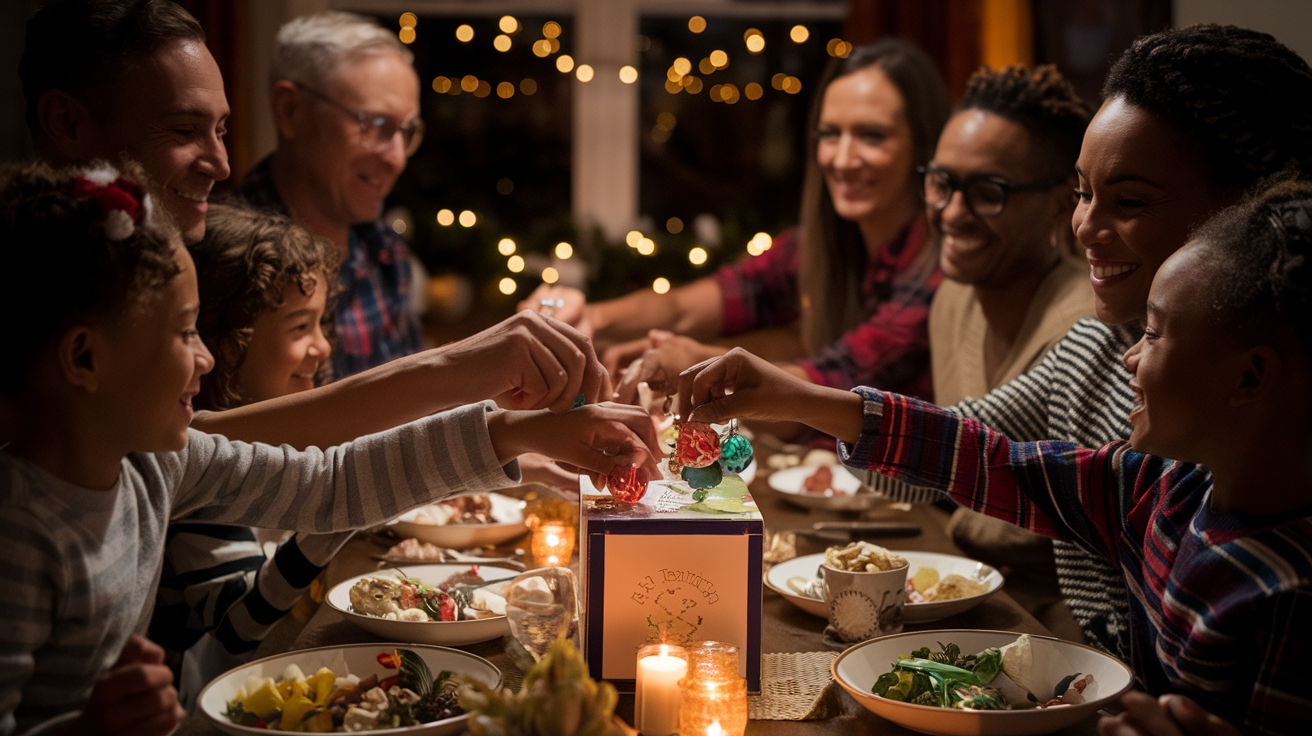
Creating seasonal celebrations unique to your family
Traditions don’t need to be complicated or expensive. In fact, the little things often become the most cherished. Think about creating seasonal rituals that only your family does.
Maybe it’s pumpkin carving contests where everyone votes on categories like “Most Creative” or “Funniest Face.” Or perhaps a summer solstice picnic where you stay up to watch the sunset at your favorite spot.
The magic happens when these activities become something everyone anticipates. My friend’s family has “Winter Olympics” during the first big snowfall—complete with homemade medals for snowman building and sledding races.
What matters is that these traditions reflect who you are as a family. They become your shared language of love.
Birthday and anniversary rituals that strengthen bonds
Birthdays are perfect opportunities for meaningful traditions. Beyond presents, create rituals that make people feel special.
Try “appreciation circles” where everyone shares something they love about the birthday person. Or let the birthday person choose the entire day’s menu—even if it means ice cream for breakfast!
For anniversaries, don’t just celebrate the parents. Make it a family accomplishment by involving the kids in planning something special. Maybe create yearly photo recreations or a special “anniversary interview” where you document how everyone has grown.
Weekly traditions that everyone looks forward to
The real relationship glue comes from consistent weekly traditions. Game nights, Sunday morning pancakes, or Friday movie marathons give everyone something to count on.
One family I know has “Thankful Thursdays” where they share their weekly wins during dinner. Another does “Mystery Mondays” where a different family member plans a mini-adventure each week.
When life gets chaotic, these regular touchpoints become anchors that hold your family together. They don’t require perfection—just presence and participation.
Expressing Gratitude and Appreciation
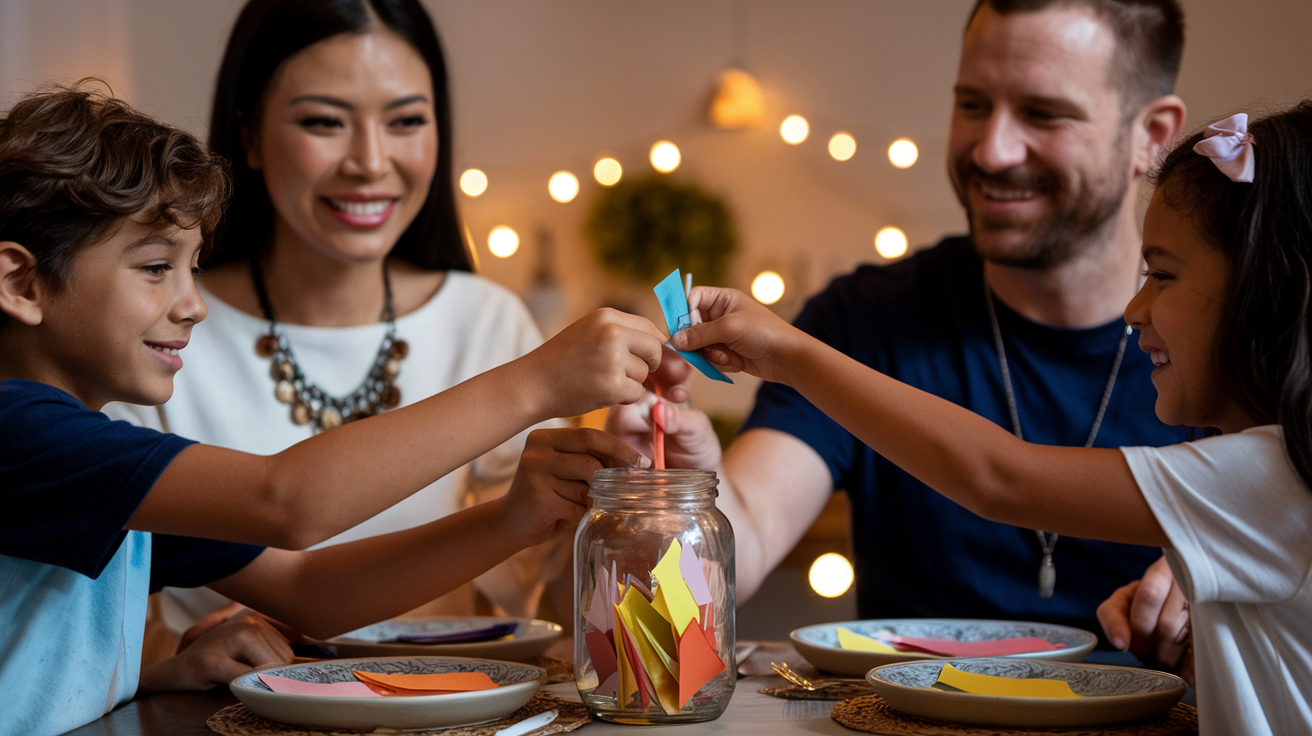
Daily affirmation practices
Ever notice how a simple “thank you” can light up someone’s whole day? In families, these little moments of recognition aren’t just nice—they’re necessary. Start your day by sharing one thing you appreciate about each family member. It could be as simple as “I love how you always make me laugh” or “Thanks for helping with dishes last night.”
These tiny acknowledgments create a positive atmosphere where everyone feels seen. Many families find that morning affirmations set the tone for the entire day, reducing conflicts and strengthening bonds.
Try this: Place affirmation cards on the breakfast table or bathroom mirrors with personalized notes of appreciation. Kids especially thrive when they regularly hear specific praise about their character, not just achievements.
Gratitude journaling as a family
Grab some notebooks and set aside 10 minutes weekly for everyone to write down three things they’re grateful for within the family. Young children can draw pictures instead.
The magic happens when you share these entries. Suddenly, you’re seeing your family through fresh eyes—noticing little acts of kindness you might have missed.
One mom told me: “My teenage son wrote that he appreciated me driving him to practice without complaining about the early hours. I had no idea he even noticed.”
These journals become precious family time capsules, documenting your growth and connection over time.
Recognition rituals that celebrate each member
Create regular moments dedicated to celebrating individual family members:
- Special plate ritual: Use a distinctive plate for someone who deserves recognition at dinner
- Friday night spotlights: Take turns having each person share a recent accomplishment while others affirm them
- Appreciation jar: Family members drop notes of gratitude throughout the week, then read them together on weekends
These rituals create safe spaces where family members feel valued for exactly who they are. The consistency matters more than the grandness—small, reliable recognition builds self-esteem and family unity better than occasional grand gestures.
Quality Time: Small Moments That Matter

Creating one-on-one connections with each family member
You know what’s crazy? Most families live under one roof but barely connect as individuals. Your teenager might be sitting next to you, but when was the last time you had a real conversation about their dreams?
Try this: schedule 20 minutes with each family member weekly—just the two of you. With younger kids, it might be building LEGO castles. For teens, maybe grabbing ice cream or shooting hoops. The activity doesn’t matter; the undivided attention does.
Shared hobbies that bring everyone together
Find something everyone genuinely enjoys—not just tolerates. Maybe it’s hiking, board games, or cooking Sunday breakfast together. My neighbor’s family started making homemade pizzas every Friday night. The kids experiment with toppings while parents handle the dough. Ten years later, they’re still doing it!
Ten-minute check-ins that deepen relationships
Small daily check-ins work wonders. Try the “high-low” technique at dinner: everyone shares their day’s highlight and challenge. It takes maybe seven minutes but creates space for real conversations about victories and struggles.
Weekend micro-adventures on any budget
You don’t need Disney World to create memories. A micro-adventure could be:
- Backyard camping
- Exploring a new neighborhood park
- Visiting a local museum’s free admission day
- Making a fort and watching movies inside
- Taking a scenic drive to nowhere special
These small adventures build your family story one memory at a time.
Supporting Each Other’s Goals and Dreams

How to be each other’s biggest cheerleaders
Families who stick together through thick and thin don’t just happen by accident. They actively root for each other, every single day.
Want to be your family’s MVP cheerleader? Start by actually listening when someone shares their dreams. Not half-listening while scrolling through your phone – real, eyes-up, “I hear you” listening. Then remember what they said. Because nothing says “I care” like following up a week later with “How’s that project going?”
Words matter too. Swap out “that sounds hard” for “I believe you can figure this out.” Small shift, huge impact.
Creating visual reminders of everyone’s aspirations
The fridge isn’t just for grocery lists and kid artwork. Turn it into your family’s vision central.
Create a simple dream board where everyone pins images of what they’re working toward. That cooking class Mom wants to take? The basketball team tryouts for your teen? Dad’s half-marathon goal? Put it all up there.
Some families create annual vision journals, where everyone draws or writes their hopes for the year. Flip through it during family meals for instant conversation starters.
Celebrating small wins along the journey
Big achievements start with tiny steps. Most families wait for the diploma, the championship, or the promotion to celebrate. Don’t.
Did your kid finally solve that math problem they’ve been stuck on? Dance party in the kitchen. Did your partner make it through a tough presentation? Surprise them with their favorite dessert.
These micro-celebrations build family unity faster than anything else. They say, “We notice your effort, not just your outcomes.”
Conflict Resolution: Turning Disagreements into Growth

Teaching emotional intelligence through example
Ever watch how your kids mirror everything you do? When you blow up over spilled milk, guess what they learn?
Kids don’t listen to what we say—they watch what we do. When you acknowledge your feelings out loud (“I’m feeling frustrated right now and need a minute”), you’re giving them the playbook for handling tough emotions.
Next time you’re upset, try this: Take a deep breath, name your feeling, and choose a response rather than reacting. Your kids are taking notes, promise.
Effective communication techniques for all ages
Family communication breaks down when we forget one simple truth: different family members need different approaches.
For little ones, get on their eye level and use simple words. With teens, respect their independence while still checking in. “I statements” work wonders across generations: “I feel worried when you don’t text me back” hits differently than “You never respond to my messages!”
The magic happens during mundane moments—car rides, doing dishes together, bedtime chats. These pressure-free zones often lead to the most meaningful conversations.
Forgiveness practices that heal relationships
In families, hurt feelings are inevitable. The difference between struggling families and thriving ones? The latter know how to repair.
Create a family culture where apologies aren’t just empty words. Teach your kids the three-part apology: acknowledge what happened, express genuine regret, and offer to make it right.
But here’s the key—forgiveness isn’t about forgetting. It’s about choosing the relationship over being right. Model this by admitting when you mess up—your kids will remember that more than your perfect moments.
Learning to disagree respectfully
Strong families don’t avoid arguments—they just fight fair. Set ground rules that everyone agrees to: no name-calling, no bringing up past mistakes, and absolutely no walking away without a cool-down plan.
Teach kids to use phrases like “I see it differently” instead of “you’re wrong.” When emotions run high, normalize taking breaks: “I need some time to think about this. Can we talk in 20 minutes?”
The goal isn’t winning—it’s understanding. When family members feel heard, even when you disagree, you’re building family communication skills that will serve them for life.

Building a strong family doesn’t require grand gestures or expensive endeavors. The seven little things we’ve explored—sharing daily meals, holding family meetings, creating meaningful traditions, expressing gratitude, spending quality time together, supporting each other’s aspirations, and resolving conflicts constructively—are powerful building blocks for family cohesion. These simple practices foster communication, mutual respect, and deeper connections between family members.
Remember that strengthening your family is an ongoing journey, not a destination. Start by incorporating one or two of these practices into your family routine and build from there. The small, consistent efforts you make today will create the strong family bonds that support each member through life’s challenges and celebrations for years to come.


